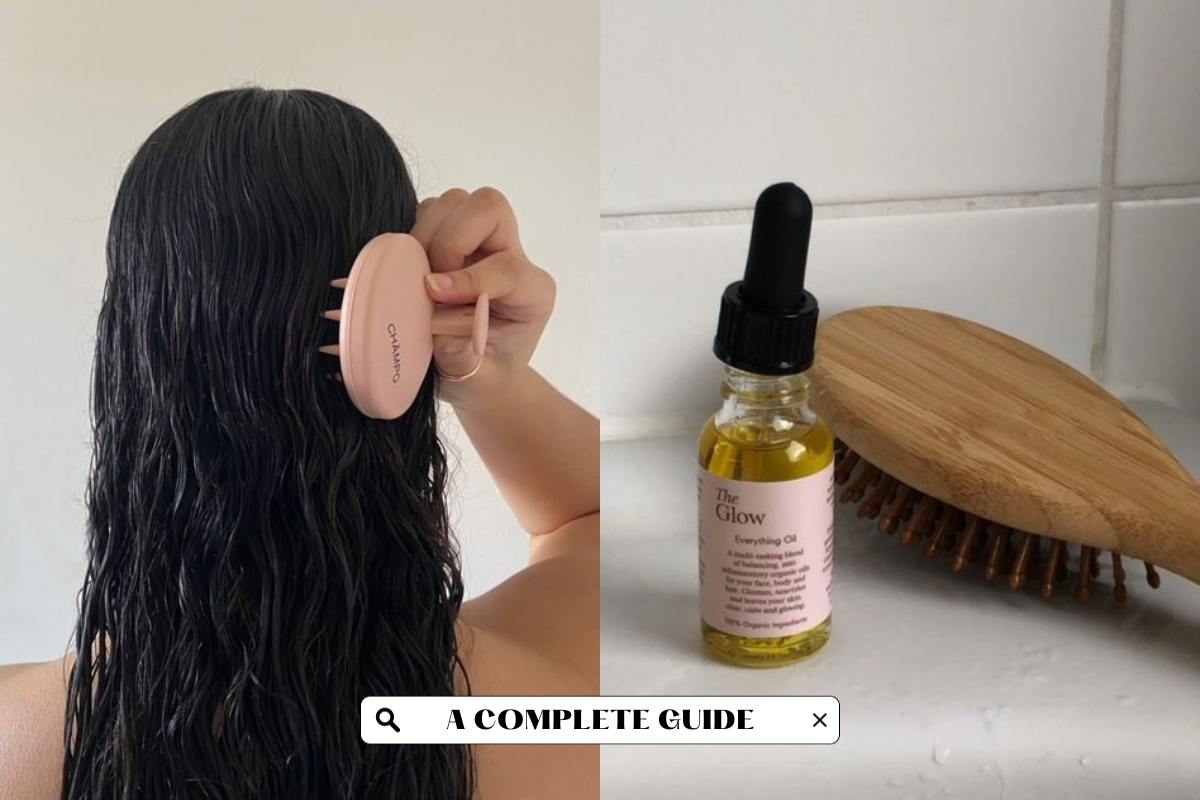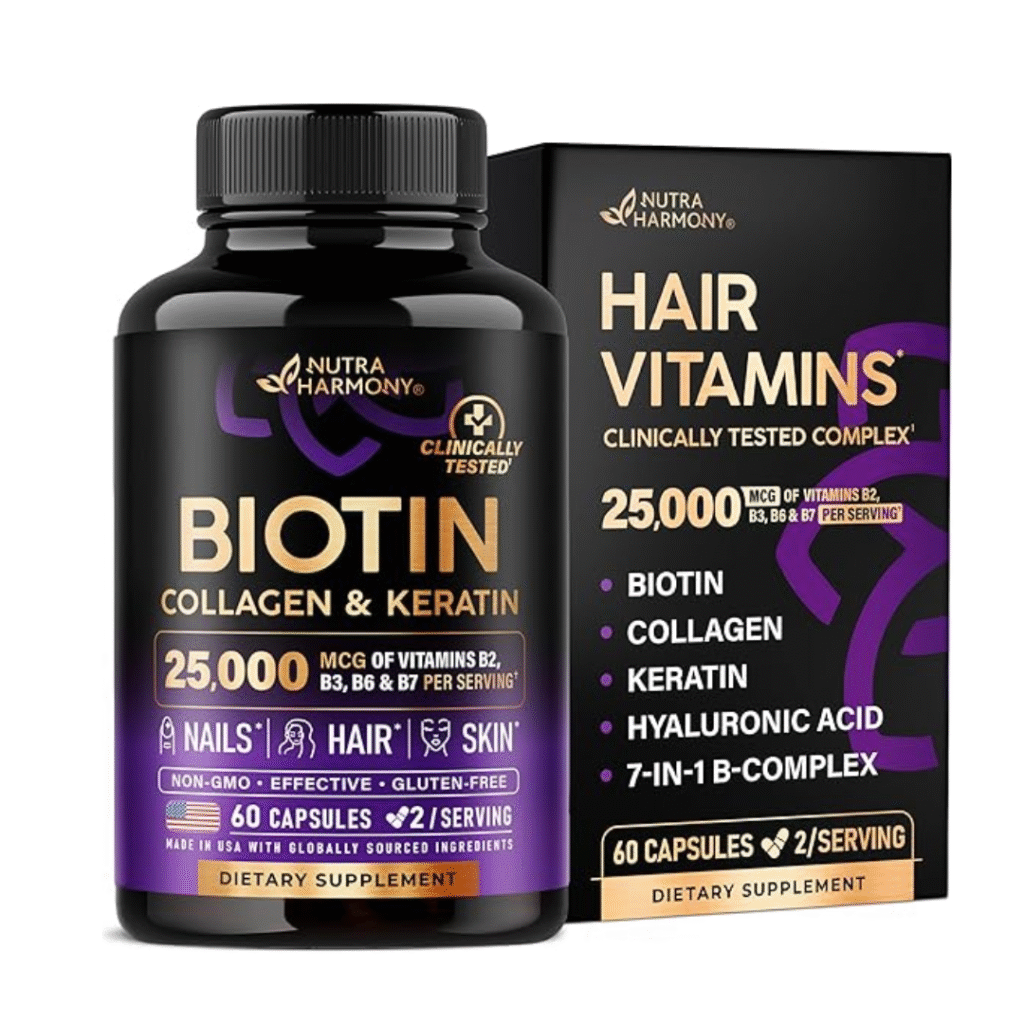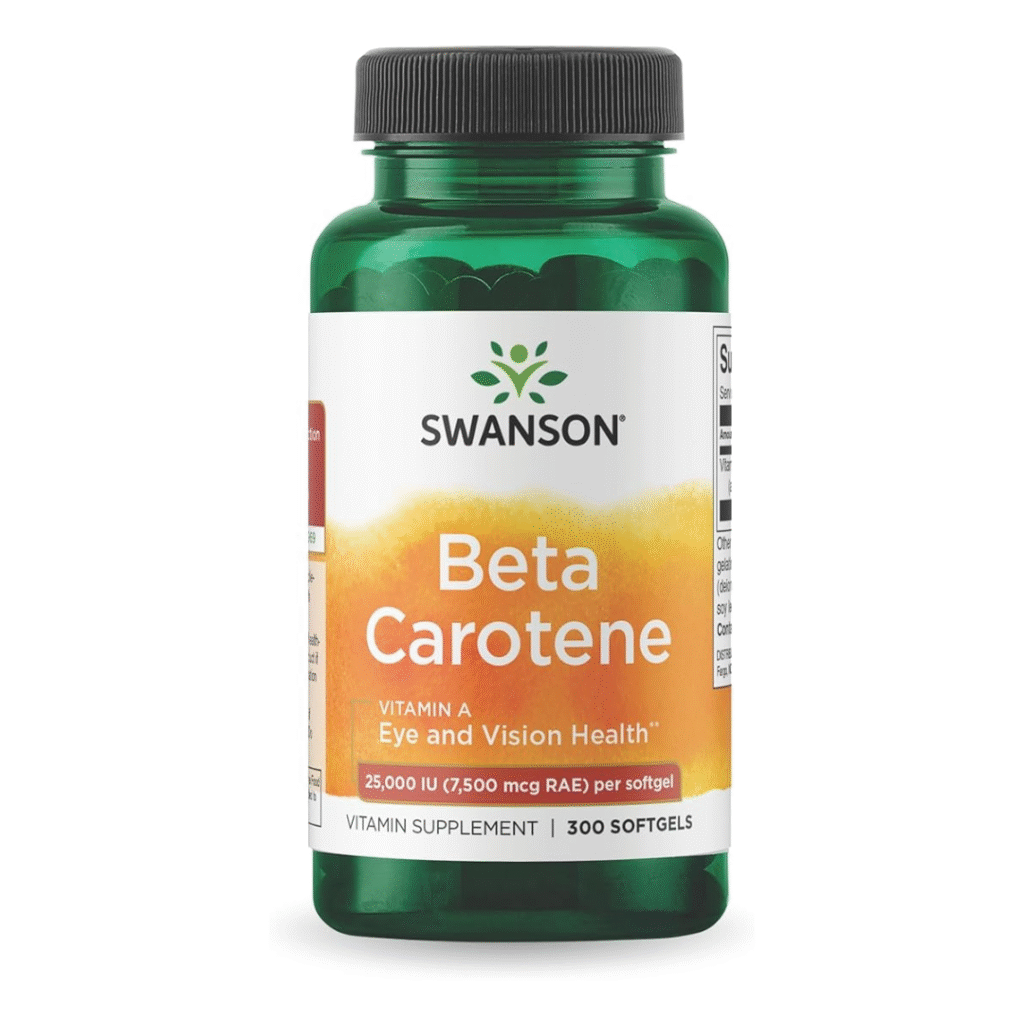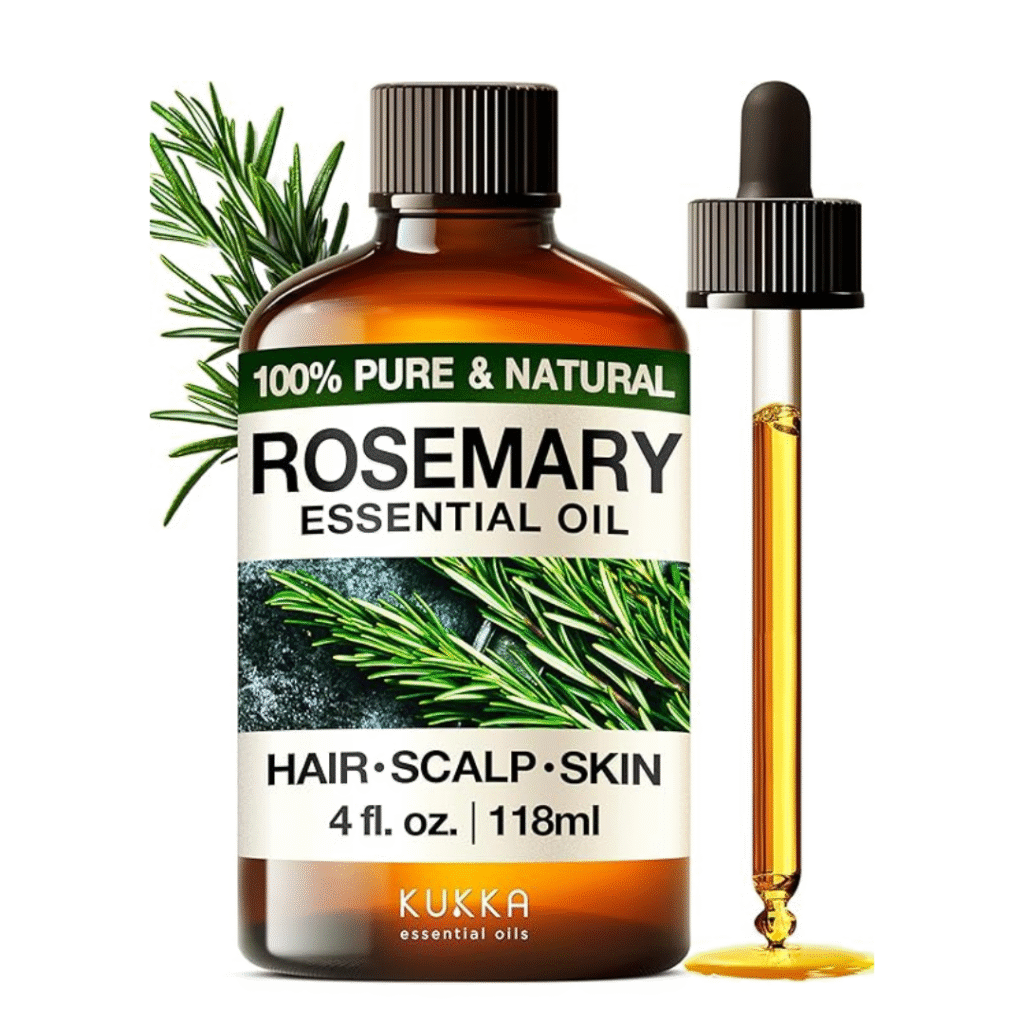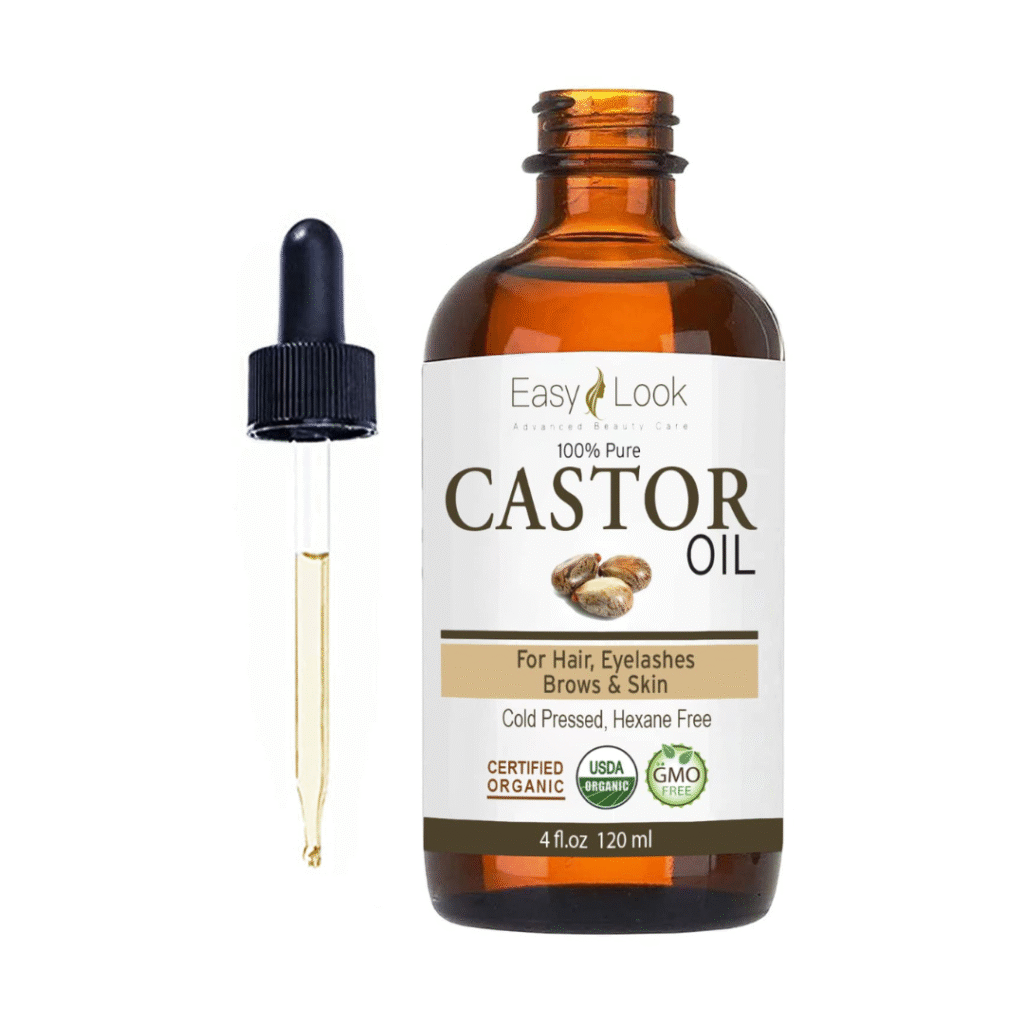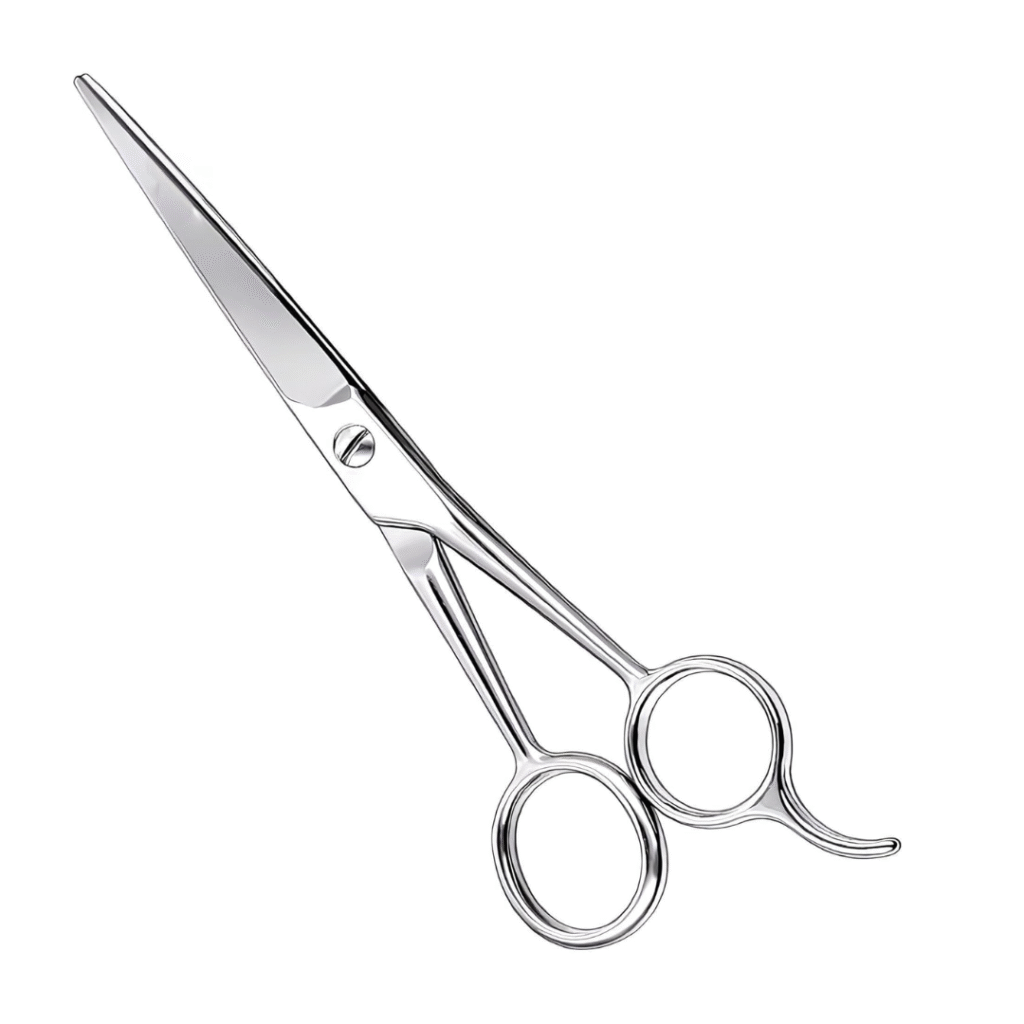Having luscious, vibrant locks is a common desire for many, but achieving and maintaining healthy hair growth requires a holistic approach. In this guide, we’ll delve into essential aspects of hair care, including the role of vitamins and nutrients, the power of oils, the significance of keratin, protein treatments, caffeine for follicle stimulation, the importance of regular trims, the right shampoo choices, minimizing hair-touching habits, and establishing a consistent hair care routine.
What Vitamins Help Hair Growth?
If you’ve ever wondered what vitamins help hair growth, you’re not alone. Your hair needs the right nutrients to grow longer, stronger, and healthier. Without them, you may notice breakage, thinning, or slow growth.
Here are the top hair growth vitamins you should know:
Biotin (Vitamin B7)
Biotin is one of the most talked-about hair growth vitamins, and for good reason—it helps your body produce keratin, the protein that forms the structure of your hair. A lack of biotin can lead to thinning, brittle strands. You’ll find biotin naturally in foods like eggs, nuts, and seeds, but it’s also a star ingredient in many hair growth products, like biotin-enriched shampoos and supplements, heck, you can even find it in rice water. If you’re struggling with hair fall, adding a daily biotin hair growth vitamin could help support stronger, thicker strands.
Vitamin A
Vitamin A supports the production of sebum, your scalp’s natural oil, which keeps hair moisturized and protected. Leafy greens, carrots, and sweet potatoes are all rich in this vitamin. Many dermatologist-approved hair growth products include vitamin A for its nourishing benefits—especially in scalp oils and serums that target dryness and breakage.
Vitamin E
Vitamin E acts as a powerful antioxidant that protects your hair follicles from damage while boosting circulation to the scalp. It’s found in foods like almonds and avocados, but also features heavily in hair growth serums designed to improve shine, strength, and overall hair texture.
Using Hair Growth Oils That Actually Work
If you’re trying to figure out how to make your hair grow faster, incorporating the right hair growth oil into your routine is a game-changer. Oils not only nourish your scalp but also strengthen your strands, reduce breakage, and improve shine—all of which support healthier, longer hair.
Rosemary Oil for Hair Growth
One of the most effective natural oils, rosemary oil has been shown to stimulate hair follicles and improve scalp circulation—similar to the effects of Minoxidil. Regular scalp massages with rosemary oil can help thicken hair over time. You’ll find it as a key ingredient in popular products like Wishcare Hair Growth Serum, which blends rosemary with biotin for double the growth benefits.
Castor Oil
Known for its high ricinoleic acid content, castor oil deeply conditions the scalp and encourages growth at the root. It also adds thickness to thinning areas and strengthens the hair shaft. Castor oil works well when used as a hot oil treatment or mixed with a few drops of essential oils like peppermint or tea tree.
Argan Oil
Packed with antioxidants, vitamin E, and essential fatty acids, argan oil is perfect for taming frizz and sealing moisture into dry or damaged hair. While it may not directly speed up the hair growth cycle, it helps retain length by preventing breakage and split ends—key factors if you’re aiming for longer hair.
Coconut Oil
A classic go-to, coconut oil penetrates the hair shaft to reduce protein loss, making it especially helpful for damaged or high-porosity hair. Use it as an overnight treatment or pre-wash mask to reduce breakage and support growth over time.
How to Use Oils for Hair Growth:
Massage your chosen oil into your scalp 2–3 times a week. Leave it on for at least 30 minutes—or overnight if you prefer—then wash out with a gentle, sulfate-free shampoo. For best results, pair your oil treatments with a consistent hair care routine and a nutrient-rich diet.
Keratin and Protein Treatments: Strengthen Hair from the Inside Out
Hair that’s dry, brittle, or breaking easily? You may not need more moisture—you might need more protein. Since your hair is made mostly of keratin (a fibrous protein), restoring that protein through targeted treatments is essential for strong, healthy growth.
Why Keratin Matters
Keratin gives your hair its structure, strength, and flexibility. But heat styling, coloring, and even sun exposure can wear it down, making your hair more vulnerable to breakage and slow growth. Replenishing lost keratin helps rebuild the hair shaft from the inside out—leading to smoother, shinier, and stronger strands.
Benefits of Protein Treatments for Hair Growth
Protein treatments fill in gaps in damaged hair, restore elasticity, and reduce split ends and breakage. While they don’t directly speed up the hair growth cycle, they play a crucial role in retaining length—which is just as important when trying to grow your hair faster.
You’ll find protein-rich hair growth products in many forms:
Leave-in treatments
Protein masks
Keratin-infused shampoos and conditioners
Salon-grade keratin smoothing treatments
These are especially helpful for chemically treated, bleached, or textured hair that needs extra strength and support.
How Often Should You Use Protein Treatments?
Protein treatments are powerful, but using them too often can cause your hair to become stiff or dry. For most hair types, a deep protein mask every 4–6 weeks is enough. If your hair is extremely damaged, you might benefit from weekly light treatments until it regains strength.
Regular Trims: The Secret to Longer, Healthier Hair
It might sound counterintuitive, but if you want to grow your hair faster, you need to trim it regularly. Skipping trims in hopes of keeping every inch often leads to more breakage and thinner ends, which slows your progress.
Why Trimming Helps Hair Growth
Trims don’t make your hair grow faster at the root, but they do help you retain length by preventing split ends from traveling up the hair shaft. Left untreated, those split ends can cause damage higher up, making your hair look frayed, flat, and weak.
The Benefits:
Prevents breakage before it starts
Keeps your ends full and strong
Reduces tangles, knots, and thinning
Improves overall hair appearance
Whether you’re using the best hair growth products or taking hair growth vitamins, trims act as a reset button—giving your hair a clean slate to grow from.
How Often Should You Trim?
Every 6–8 weeks is ideal for most hair types, especially if you use heat, color, or protective styles. If your hair is curly or prone to dryness, watch for signs like thinning ends or excessive shedding—those are clues it’s time for a dusting.
Best Shampoo for Hair Growth
The right shampoo can make or break your hair growth routine. While your shampoo won’t directly speed up growth from the scalp, using the wrong one can cause dryness, breakage, and scalp issues that sabotage your progress.
Choose a Sulfate-Free Hair Growth Shampoo
Many commercial shampoos contain sulfates, harsh detergents that strip away your scalp’s natural oils. While they’re great for removing buildup, they can also leave your hair dry, brittle, and more prone to breakage. For healthier hair, switch to a sulfate-free shampoo—especially if you have dry, curly, or color-treated hair.
Look for shampoos labeled as:
Hair growth shampoo with biotin or caffeine
Dermatologist-approved hair growth products
Strengthening or repairing formulas with keratin or collagen
Don’t Over-Wash
Washing your hair too often can strip away the oils your scalp naturally produces to protect and nourish your strands. Unless your scalp is oily or you’re working out daily, try shampooing 2–3 times per week. In between washes, use a gentle dry shampoo or simply rinse with water to refresh.
Focus on the Scalp, Not the Ends
Your shampoo should target the scalp, where buildup and oil collect. Gently massage with your fingertips (not nails) to stimulate circulation and keep follicles healthy. Let the lather rinse down the lengths—no need to scrub the ends directly.
Bonus: Try a Hair Porosity Test
Knowing your hair’s porosity can help you pick the best shampoo and conditioner for hair growth.
Here’s how to test:
Drop a clean strand of dry hair into a glass of water.
Floats? You have low porosity—look for lightweight, hydrating shampoos.
Sinks slowly? That’s normal porosity—balanced shampoos work best.
Sinks quickly? High porosity—go for moisture-rich, protein-infused formulas.
Pro Tip: Pair your shampoo with a matching conditioner and follow up with a nourishing hair growth serum or hair oil to lock in hydration.
How to Prevent Hair Breakage
If your hair keeps breaking before it gets longer, it can feel like growth is at a standstill. But often, the issue isn’t with your scalp—it’s with how you handle your hair daily. Learning how to prevent hair breakage is one of the best tips for hair growth that actually pays off.
Stop Touching Your Hair Constantly
Running your fingers through your hair, twisting strands, or frequently restyling can create friction and tension—especially on already fragile ends. These small habits add up over time, leading to breakage and split ends. Be mindful of how often you touch your hair during the day.
Avoid Tight Hairstyles
While protective styles like braids and buns are great, tight versions of them can pull at the hairline and stress the roots. Styles that cause tension—like tight ponytails or slicked-back looks—can lead to traction alopecia over time. Opt for looser, low-tension styles that protect your hair without pulling too hard.
Use Gentle Tools and Techniques
Always detangle gently using a wide-toothed comb or a detangling brush, starting from the ends and working upward.
Avoid brushing wet hair unless you’re using a conditioner or leave-in spray.
Pat your hair dry with a soft towel or microfiber wrap—don’t rub or wring it out.
Minimize Heat Damage
Excessive use of hot tools weakens the hair shaft and causes moisture loss. If you must use heat:
Always apply a heat protectant
Use the lowest effective setting
Limit heat styling to once or twice a week
Final Thoughts: How to Grow Hair Faster Starts with Small, Consistent Changes
Growing longer, healthier hair isn’t about doing one big thing—it’s about doing the right small things consistently. From using the best hair growth products like oils, serums, and shampoos, to improving your diet, managing breakage, and being patient with your hair’s natural cycle, every habit adds up.
Remember:
Choose ingredients that nourish your scalp and support growth from the root
Protect the hair you’ve already grown by preventing breakage
Stay consistent and trust the process—real hair growth takes time
If you’re serious about your journey, bookmark this post or save it to your Pinterest board so you can come back to these hair growth tips anytime.
